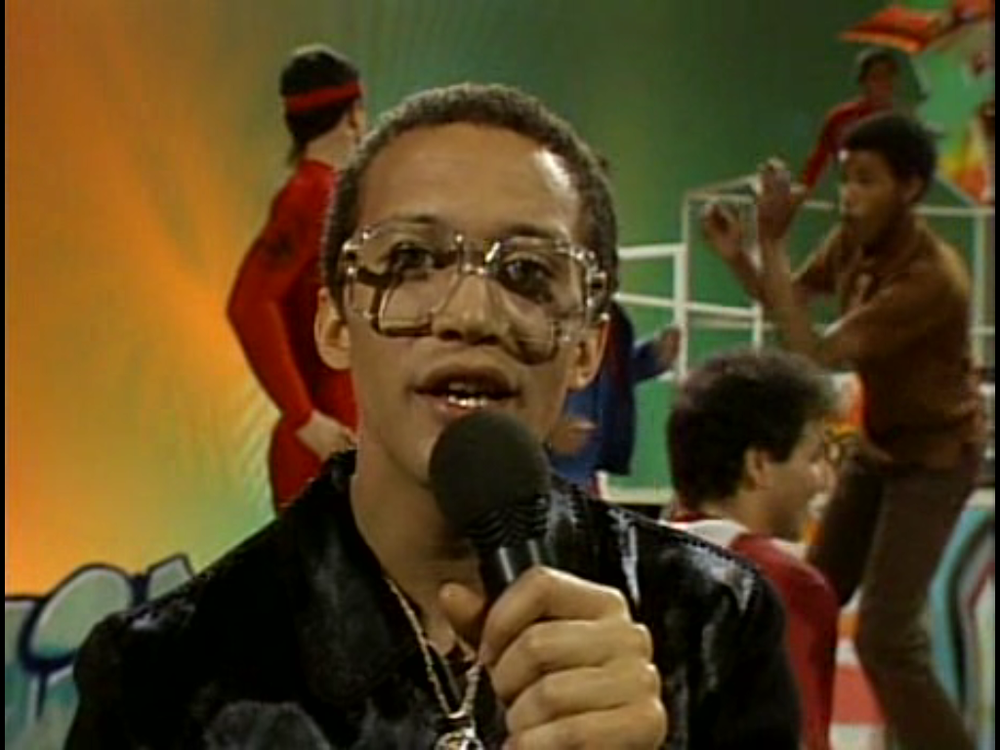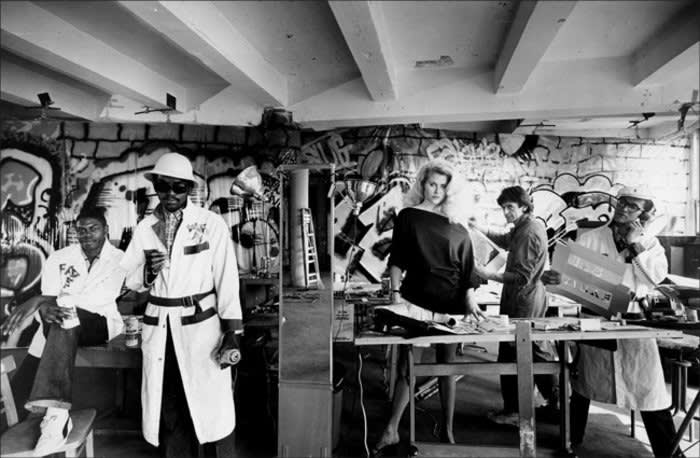
Canal Zone Party Crew
It is complicated to pinpoint exact moments when culture shifts. The Canal Zone Party, as it is famously known, was without question one of these catalysts; a collision of creative personalities and ideas that led to the making of a slew of wildly influential artwork coming out of both downtown and uptown communities in New York throughout the 1980s.
The Canal Zone Party was the brainchild of Michael Holman, Stan Peskett and Fab 5 Freddy. Stan Peskett was creating instillations for Fiorucci and Canal Jeans at the time, while Holman, among his many notable achievements, had been reading The Village Voice where he found an article about The Fab 5 Graffiti Group. The idea for the party was decided upon after the three had discussed arranging for the entire Fab Five crew to tag giant burners, inviting the downtown art world so they could view the work in real time and meet the artists. The goal of the event, being to bring artists from two different worlds, uptown and downtown, together for one night.
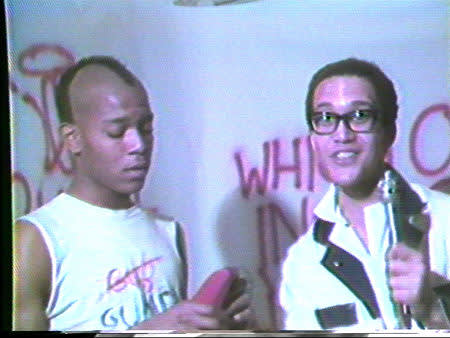
Jean-Michel Basquiat and Michael Holman
Canal Zone Party, 1979
The party, which took place on April 29th, 1979, was a pivotal moment of creative convergence, a catalyst that helped birth an atmosphere based on acceptance and inclusivity within the artistic community. The ruling concept of The Canal Zone Party was to develop an alternative media space for everybody wanting to be involved, where words, images and art could interact, serving as a precursor to a collaborative art scene that developed in New York come the early 80s through the 1990s.
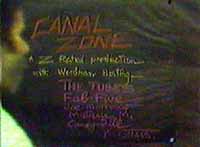
The Canal Zone Party
Downtown New York, 1979
The title of the party came about based on the idea that artists or people feeling “lost” could go to find themselves at the “Canal Zone”. The name itself was a historical reference, symbolic in meaning, as the Canal Zone was an unincorporated territory of the United States centered on the Panama Canal from 1903 to 1979. The lost territory was later abolished and handed over permanently to Panama in 1999.
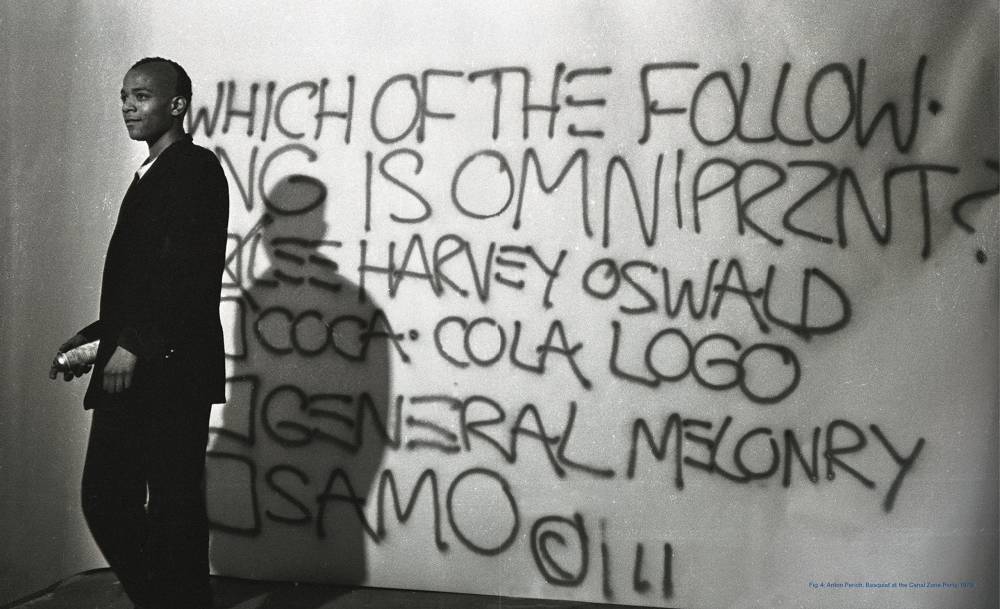
Jean-Michel Basquiat
At the Canal Zone Party
The party itself took place on Canal and Greenwich Street. The Fab Five crew produced graffiti on giant sheets of clear plastic, while Jean-Michel Basquiat, who had heard about the party and was, at time, tagging the streets of downtown New York through his pseudonym ‘SAMO’, arrived early, eager to participate. Holman, who had never met Basquiat, found him a large nine-foot-wide roll of paper, on which Basquiat proceeded to write: WHICH OF THE FOLLOWING is OMNIPRZNT? - Lee Harvey Oswald - Coca Cola Logo - General Melonry - SAMO
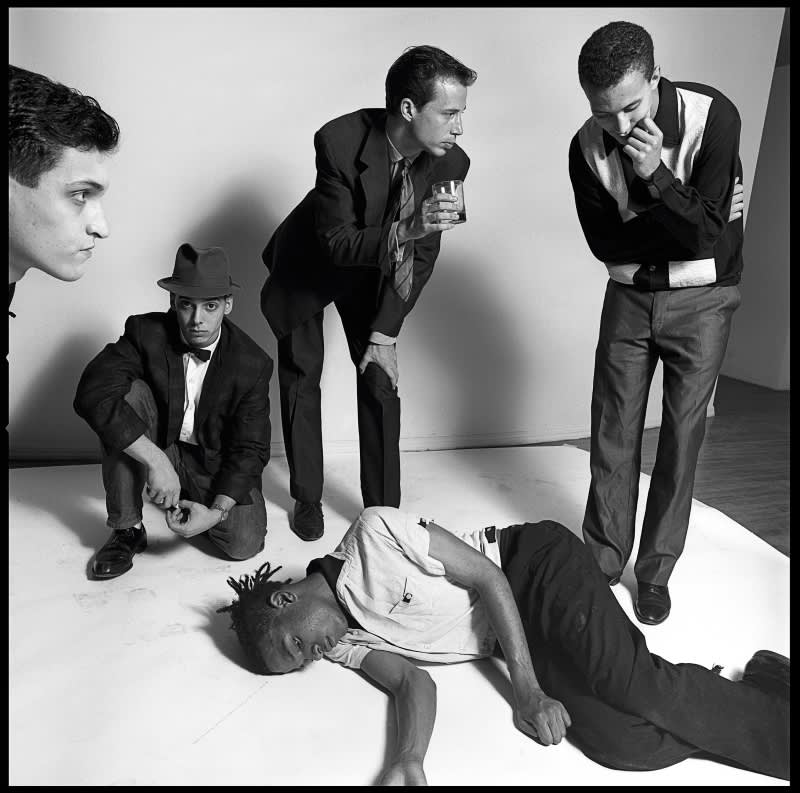
Gray in 1980
Basquiat lying on the floor, Vincent Gallo, Wayne Clifford, Nick Taylor, Michael Holman.
This was the beginning of a fond and creative friendship between Holman and Basquiat, both of whom would later go on to play together in the group called Gray, a notable experimental noise band, with other members including, Shannon Dawson, Wayne Clifford, Nick Taylor, and Vincent Gallo.

'Gray' Band
Jean-Michel Basquiat and Michael Holman
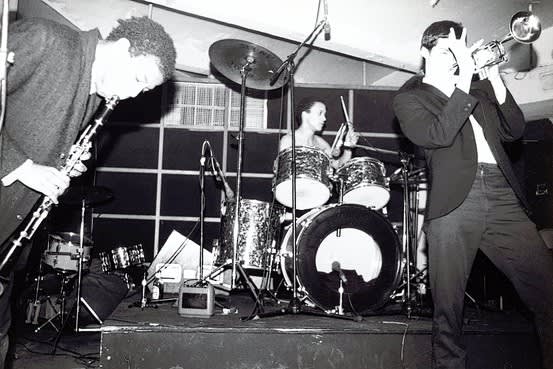
'Gray' Band
Performing, 1980
Holman played a key role behind the scenes in the popularization of New York’s hip-hop culture in the late 70s and early 80s. He is credited for introducing Malcolm McLaren to rap music, as well as being the first to use the term “hip-hop”.
Through The Canal Zone Party, Holman brought uptown graffiti artists and the downtown creative scene together, an uncommon gesture and an indelible achievement, which pushed social, cultural, and artistic boundaries forward for a new generation.
